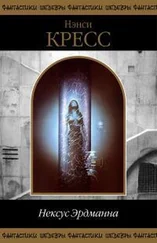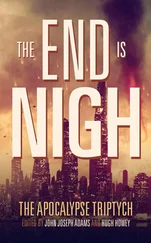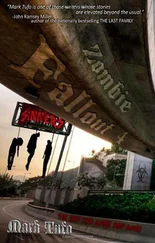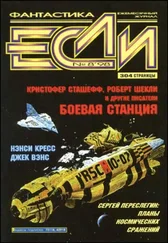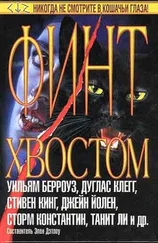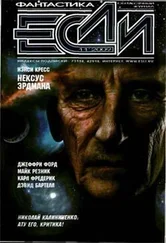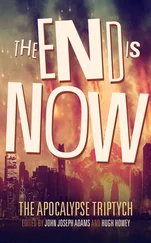The Apocalypse Triptych
Edited by John Joseph Adams and Hugh Howey

Cover Art by Julian Aguilar Faylona
Cover Design by Jason Gurley
INTRODUCTION
John Joseph Adams
The world dies over and over again, but the skeleton always gets up and walks.
—Henry Miller, “Uterine Hunger,” from The Wisdom of the Heart
The Apocalypse Triptych was conceived as a series of three anthologies, each one covering a different facet of the end of times. Volume one, The End is Nigh, contains stories that take place just before the apocalypse. Volume two, The End is Now, focuses on stories that take place during the apocalypse. And, naturally, this third volume, The End Has Come, features stories that explore life after the apocalypse.
But we were not content to merely assemble a triptych of anthologies; we also wanted story triptychs as well. So when we recruited authors for this project, we encouraged them to consider writing not just one story for us, but one story for each volume, and connecting them so that the reader gets a series of mini-triptychs. So several of the stories contained in this anthology — eighteen of the twenty-three tales — have related stories in The End is Nigh and The End is Now. They conclude with The End Has Come.
If you’re one of the readers who read and enjoyed volumes one and two: Thank you! We’re glad to see you returning for volume three. You made the first two volumes a resounding success, and we couldn’t be more thrilled both with how well the books have done in the marketplace and with how well they’ve been received by readers and critics.
If you’re a reader who has not read The End is Nigh or The End is Now: Welcome! And fear not: You needn’t have read either of the previous volumes in order to enjoy the stories in this one. Although several of the stories in The End Has Come pick up where other volumes left off, we’re confident that the authors have provided sufficient context that you can jump into their worlds without any prior knowledge.
* * *
Now for a confession: Although I’m fascinated by all the different modes of the apocalypse — as evidenced by volumes one and two of this Triptych — post-apocalyptic fiction is my first and dearest love.
My fascination with post-apocalypse narratives began with the 1988 video game Wasteland (and then was reinforced by its spiritual successor, Fallout). I have been hopelessly hooked ever since. Years later, when I started pursuing writing and editing, the first piece I ever sold was an article about post-apocalyptic fiction. Later, the first anthology I ever sold (Wastelands: Stories of the Apocalypse) was a reprint anthology with the same focus. So in some ways this final volume of The Apocalypse Triptych is like seeing my career come full circle.
Which seems appropriate, as coming “full circle” is what post-apocalyptic fiction is all about. From the dust we came, and to the dust we shall return. But once everything has turned to dust, what then will rise from the ashes?
Enid and Bert walked the ten miles from the way station because the weather was good, a beautiful spring day. Enid had never worked with the young man before, but he turned out to be good company: chatty without being oppressively extroverted. Young, built like a redwood, he looked the part of an investigator. They talked about home and the weather and trivialities — but not the case. She didn’t like to dwell on the cases she was assigned to before getting a firsthand look at them. She had expected Bert to ask questions about it, but he was taking her lead.
On this stretch of the Coast Road, halfway between the way station and Southtown, ruins were visible in the distance, to the east. An old sprawling city from before the big fall. In her travels in her younger days, she’d gone into it a few times, to shout into the echoing artificial canyons and study overgrown asphalt roads and cracked walls with fallen roofs. She rarely saw people, but often saw old cook fires and cobbled together shantytowns that couldn’t support the lives struggling within them. Scavengers and scattered folk still came out from them sometimes, then faded back to the concrete enclaves, surviving however they survived.
Bert caught her looking.
“You’ve been there?” Bert said, nodding toward the haze marking the swath of ruined city. No paths or roads ran that way anymore. She’d had to go overland when she’d done it.
“Yes, a long time ago.”
“What was it like?”
The answer could either be very long or very short. The stories of what had happened before and during the fall were terrifying and intriguing, but the ruins no longer held any hint of those tales. They were bones, in the process of disappearing. “It was sad,” she said finally.
“I’m still working through the histories,” he said. “For training, right? There’s a lot of diaries. Can be hard, reading how it was at the fall.”
“Yes.”
In isolation, any of the disasters that had struck would not have overwhelmed the old world. The floods alone would not have destroyed the cities. The vicious influenza epidemic — a mutated strain with no available vaccine that incapacitated victims in a matter of hours — by itself would have been survivable, eventually. But the floods, the disease, the rising ocean levels, the monster storms piling one on top of the other, an environment off balance that chipped away at infrastructure and made each recovery more difficult than the one before it, all of it left too many people with too little to survive on. Wealth meant nothing when there was simply nothing left. So, the world died. But people survived, here and there. They came together and saved what they could. They learned lessons.
The road curved into the next valley and they approached Southtown, the unimaginative name given to this district’s main farming settlement. Windmills appeared first, clean towers with vertical blades spiraling gently in an unfelt breeze. Then came cisterns set on scaffolds, then plowed fields and orchards in the distance. The town was home to some thousand people scattered throughout the valley and surrounding farmlands. There was a grid of drained roads and whitewashed houses, solar and battery operated carts, some goats, chickens pecking in yards. All was orderly, pleasant. This was what rose up after the ruins fell, the home that their grandparents fled to as children.
“Will you let the local committee know we’re here?” Bert asked.
“Oh, no. We don’t want anyone to have warning we’re here. We go straight to the household. Give them a shock.”
“Makes sense.”
“This is your first case, isn’t it? Your first investigation?”
“It is. And . . . I guess I’m worried I might have to stop someone.” Bert had a staff like hers but he knew how to use his for more than walking. He had a stunner and a pack of tranquilizer needles on his belt. All in plain view. If she did her job well enough he wouldn’t need to do anything but stand behind her and look alert. A useful tool. He seemed to understand his role.
“I doubt you will. Our reputation will proceed us. It’s why we have the reputation in the first place. Don’t worry.”
“I just need to act as terrifying as the reputation says I do.”
She smiled. “Exactly — you know just how this works, then.”
Читать дальше




